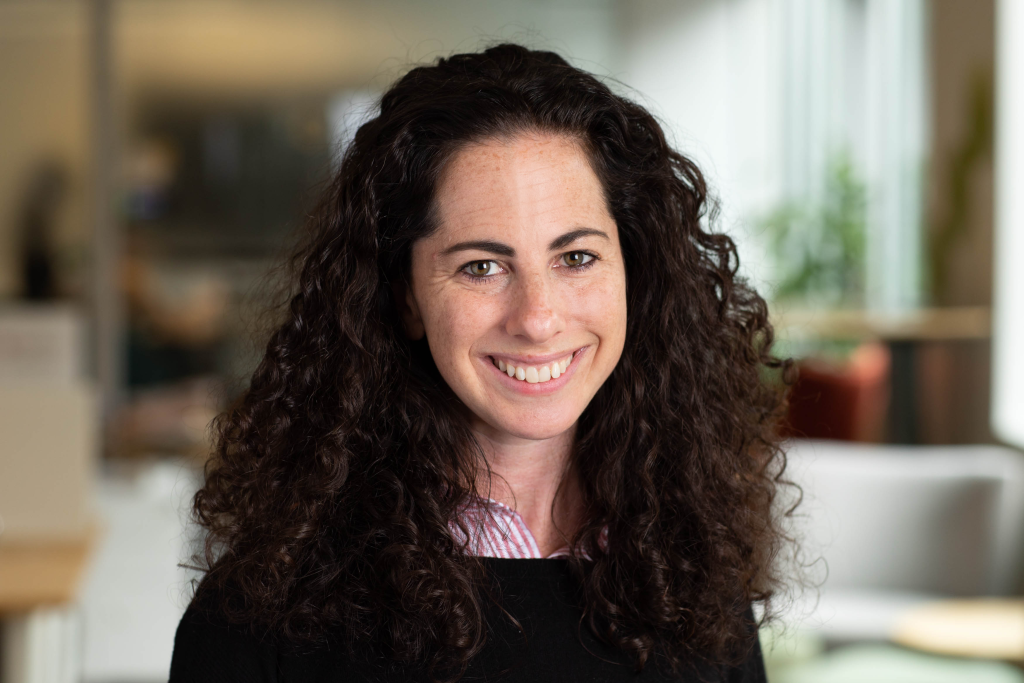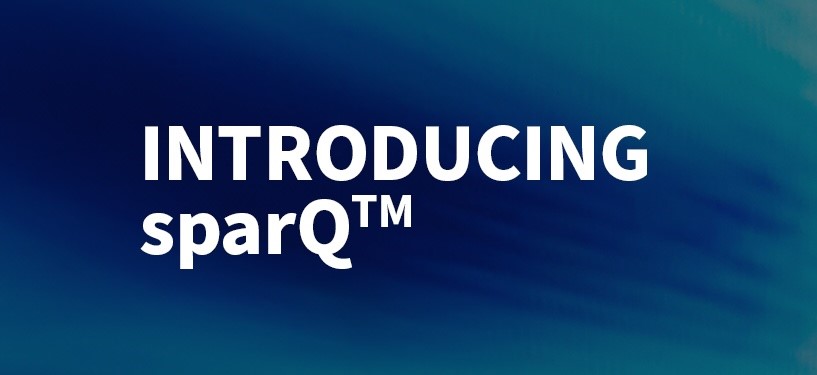By her own admission, Dr. Liana Epstein ended up in tech by accident. Armed with a doctorate in quantitative social psychology, she initially set out with the mission to use data to tackle real-world messy problems at a time when data science, as a discipline, barely existed. Today, after working in both private and public sector roles across the world, she remains true to that mission as the Chief Operating and Analytics Officer at Cangrade.
Cangrade is a hiring solution that uses AI and Machine Learning to empower organizations to make data-driven hiring decisions – from pre-hire through professional development and promotion – so that companies hire candidates who will succeed and stay and candidates find the right role for them.
For Dr. Epstein, building Cangrade was not only a way to create positive change in the world from within the private sector, but also a way to build the type of place that she wanted to work for, from the ground up.
MassTLC Community Manager Nayla Daly spoke with Dr. Epstein to learn more about why employee happiness is not just a nice to have, but a need to have in all organizations and how Cangrade is keeping human resources human.
Read on for the full conversation.
___
Can you tell me a little bit about Cangrade? What is your elevator pitch?
Cangrade is a company that is all about making data-driven talent management decisions. We’re not just a Pre-Hire Assessment software. We’re a solution that looks at the whole lifecycle of talent management and helps organizations use data to guide their journey from pre-hire through to professional development, promotion, lateral movements within your organization. We believe hiring is not just a one-touch, set-it-and-forget-it kind of solution; it’s a commitment that you make as an organization to nurture an employee, to make sure that you set them up to succeed and help them thrive once they get there.
“We believe hiring is not just a one-touch, set-it-and-forget-it kind of solution; it’s a commitment that you make as an organization to nurture an employee, to make sure that you set them up to succeed and help them thrive once they get there.”
What is your background and how has it applied in your career and role at Cangrade?
I have a doctorate in quantitative social psychology. I got my feet wet as an undergraduate in international development and it got me interested in trying to use data and science to tackle real messy problems that existed in the world before data science truly existed. When I decided to go to grad school and get my doctorate, I tried to pick a discipline that would give me what I felt was the best toolkit to tackle real-world problems effectively, so that’s how I ended up in quantitative social psychology. The skills that I learned there as a researcher and as a data scientist were invaluable.
I ended up in tech by accident, and that’s when I got to experience the power that you can have in the private sector to effect change. I circled back to the world of international development and worked for nonprofits. I kept bouncing back and forth between tech and development, and I found myself unsatisfied with both worlds. When I had the good luck to meet Gershon [Goren, Founder & CEO, Cangrade], we put our heads together to start Cangrade. Cangrade was a way to tackle real-world, messy social problems with the efficiency and the power that you can get in the private sector. The beauty of being ROI-driven is that you can explain the power of your solutions in terms of dollars and cents to your clients. You don’t necessarily have that ability to move fast and break things in other sectors, and in tech startups, you do.
Cangrade is my attempt to make the change that I want to see in the world from within the private sector, and my chance to build a place where I want to work as well. It’s been really rewarding to build the kind of environment that we try to help our clients nurture, which is one that helps our employees thrive, get the most out of their roles, and can contribute to people’s happiness.
A lot of the time happiness at work is seen by organizations as a nice to have and not a need to have for their employees. The silver lining of this “Great Resignation” is that organizations have started to see that workplace happiness is essential because employee turnover hits your ROI hard. The time to make your employees happy is not right before they’re going to hand in their resignation. It starts before you even hire them. That’s why our solution, moving throughout that talent management lifespan, as it does, is so powerful and so important for the time that we find ourselves in right now.
How does the use of AI allow you to hone in on soft skills during the hiring process?
Gershon and I set out to build a better way to hire people. It sounds simple. You want to hire the right people for the job. But hiring the right people for a job is actually really complicated! For instance, how do you make sure that bias doesn’t leak into the hiring process and that you’re being completely objective when assessing candidates? How do you accurately predict who’s going to thrive with your organization as quickly as possible? The stakes are really high from both an ROI and a DE&I standpoint.
When we started talking about the most efficient and effective way to build our solution, it was a no-brainer to go with AI and Machine Learning. That’s because machines can compute and juggle data in a much more objective and speedy manner than humans will ever be able to do. For us, the goal was to build a collaborative process between humans and machines. There are some things that humans are really good at, and machines are not so great at. Then some things that machines are really great at that humans are not so good at. The point is to leverage the different skill sets effectively to make the hiring process as efficient and as accurate as possible.
Expanding a little bit on AI, integrating AI into the hiring process has lots of benefits. What are some of the most important benefits?
First, efficiency. Computers can tell you instantaneously whether someone looks like a good person to interview or not. It takes humans forever to do this. Whether you’re doing it perfectly or imperfectly, it’s hard. Unless you’re literally picking names out of a hat, there’s no way to beat a machine in terms of how fast they can tell you whether or not to follow up with a candidate based on the soft skills assessment that we administer. The clients we work with can eliminate all kinds of outsourcing and consultative efforts.
The next reason it’s important is that it’s a cost-effective way to leverage your HR team. It’s very expensive to have humans sitting there sifting through candidates. It’s a cost-saving measure for a lot of our clients because AI does that grunt work.
You have burnout in HR as well. Recruiters are exhausted. They’re doing tons of candidate screens and this grunt work is tiring for humans. This means you have the potential to lose HR folks to burnout. So it’s also about keeping HR teams happy by letting AI do the grunt work, and allow for the human recruiters to do the more fun part (for humans), which is those deep-dive interviews. From a pure cost factor, AI can help lift some of the burdens.
The last thing that I would say is a critical benefit of AI is this idea of removing bias. DE&I is a key aspect of our mission at Cangrade. The idea that hiring equity is not just a nice to have, but a need to have, the same way that workplace happiness is, is important. It’s important that you hire the best person for the job, and that you’re not just hiring a replica of the last person you hired because, historically and traditionally, that has meant the exclusion of diversity from the workplace. Not just diversity in terms of ethnicity and gender, but diversity in its broadest sense –whether it’s neurodiversity, or age, or folks that have a gap in their resume, et cetera.
The bottom line is that your organization is going to benefit from having a wealth and a range of perspectives, experiences, backgrounds, and thought patterns. Using something like Cangrade’s Pre-Hire Assessment to hire for soft skills allows you to tap into a lot of non-traditional candidates that may be a way better fit for your job than someone who just looks good on their resume. We all have had those interviews where someone looks fantastic, and then you get them on the phone and think, “they don’t have the soft skills to succeed at all.” Moving and shifting towards soft skills and AI hiring instead of hiring based on a hard skills checklist, a referral from someone in your network, or resume screening looking for buzzwords, allows you to avoid unintentional bias leaking into your hiring process.
You mentioned how there has been so much pressure on HR teams and leaders of HR to make it all work, that there’s burnout there. To have the technology to help support them and their burden is a fascinating point.
Our pitch to HR teams is always, “at no point do we think that this Pre-Hire Assessment that we have is going to replace HR.” Again, for us, it’s all about collaborative interactions between humans and AI technology, and about unlocking the power and the potential of the HR team you already have to do their job. Each human employee has eight hours in their workday, how do you want them to use those eight hours? I guarantee that they don’t want to be sifting through resumes for eight hours and it’s not a cost-effective use of their skills or time. So let our AI do the grunt work prep for your team, and then let your recruiting team do what they’re fantastic at, which is making those human connections with your top potential candidates and figuring out who out of all of the potential superstars would be the best fit for your organization. From a burnout and happiness perspective for your recruiting team, this is critical.
It may seem counterintuitive, but AI can help keep human resources hiring more human. We’re trying to use AI to put some of the humanity back into the hiring process, because it can feel like a very dehumanizing process on both sides. The goal of AI technology from our perspective is to make the hiring process go more smoothly and have it feel more human than it would if you didn’t have our Machine Learning helping you out.
What are the most strategic areas that organizations should focus on in 2022 and 2023 to strengthen their workforce? What are the trends? Where is this heading? What do organizations need?
The idea of workplace happiness that we touched on already is critical. This has always been thought of as ordering some cupcakes and putting some free snacks in the kitchen, and you call it good, everyone’s happy. Send your employees a branded fleece in the mail, and congratulations, they’re happy. There’s some sort of checklist now that companies seem to go through. I think what they’re finding is that none of that is what makes people happy. What makes people happy is having a flexible work schedule so they can go to their kids’ soccer practice without it meaning that they’re losing a chance at a promotion because it looks like they’re not taking their work seriously. It’s about organizations committing to that idea of happiness as important and treating their employees like human beings of value.
“What makes people happy is having a flexible work schedule so they can go to their kids’ soccer practice without it meaning that they’re losing a chance at a promotion because it looks like they’re not taking their work seriously. It’s about organizations committing to that idea of happiness as important and treating their employees like human beings of value.”
That’s not as easy as a cupcake order that you can place. There’s a commitment and a culture shift you have to make as an organization. You have to give people a voice in your organization to shape what they want their culture to look like. Then you actually have to listen. If you’re going to ask the questions, you need to listen to the answers. And you need to make sure that you’re creating enough psychological safety in your workplace that you get real answers to your questions. That’s critically important.
Retention is going to be an issue for a while once people realize that they can vote with their feet and that they’re not being penalized by future employers for having done so. It’s not going to stop just because people are coming back into the workforce post-COVID. Organizations need to take time to engage with that.
Another facet that I think is going to be crucial is the idea of employee value. One way of communicating value to your employees is by promoting their professional development journeys. Another reason why people are switching employers or careers is that they feel stuck. It’s critical to make sure that employees see a career pathway within your organization because if they don’t they’re going to go somewhere else to find it.
That doesn’t necessarily mean making promotions available. It means you need to give them the flexibility to try something new if they want, to skill build with them, to have a soft skills assessment identify their skill gaps and to work on them with them. Any kind of assessment you have employees do should be used not as a platform to put someone on a performance improvement plan, punish them, or deny them a promotion, or anything like that, but as a platform to skill build with them and help them develop their careers into what they want them to look like. Focus on what you can do to help them feel valued, seen, and supported throughout their professional development within your company, so they’re not leaving and going somewhere else to find it. People stay where they’re valued.
We’ve done a lot of research on retention over the past year at Cangrade because we know that this is something that our clients care more and more about as the years go on, in terms of what a successful hire looks like. A successful hire isn’t just someone who performs, it’s someone who stays. Hiring someone who can perform is great, but you also need to be able to hire someone who’s going to perform for years and years to come, ideally with your organization, because if you don’t, it’s expensive. You can care about it from a moral perspective or you can care about it from a dollars and cents perspective. It’s up to you as an organizational leader, those two things aren’t in opposition. A lot of times people think of them as juxtaposed. That there is some sort of trade-off between employee happiness, communicating value, and making employees feel good, and making money. This just couldn’t be further from the truth. Making employees feel valued means they’re going to stay, and if they stay, you make more money.
“Making employees feel valued means they’re going to stay, and if they stay, you make more money.”
Is there anything else that you’d like to share about Cangrade that we didn’t cover?
Whether or not you use Cangrade’s soft skills assessment or another solution, the idea of moving from hiring based on hard skills to soft skills is critical for all things hiring and talent management. It’s such an important shift if, as an organization, you want to stay ahead of the curve. It will make sure that you have the biggest talent pool possible, that you’re getting the absolute best people, and that you’re snatching up those candidates that other employers passed on because they didn’t notice their untapped potential. Soft skills are the future, and it’s critical as an organization to get on board with this trend.
Equally as important is to do your homework in terms of the science that goes into any solution you choose for AI technology, soft skills, or anything else in the HR space. There are a lot of players in our space. Obviously, we think that we’re the best in class for everything we do, but it’s really important as a consumer of this technology in the HR space that you ask follow-up questions of science teams because whatever solution provider you use should be able to give you answers about how they do it, why they chose to do it that way, how they can ensure that there’s no bias leaking into their process, how they can actively contribute to hiring equity, and how they ensure that you’re not going to get sued or anything negative like that.
It’s critical to be an educated consumer of this kind of technology because it does have the capacity to go wrong. If you pick a technology that hasn’t done the work to vet the science that goes into it, that could be doing tremendous harm to the integrity of your hiring process. You don’t want to make decisions based on bad data. Being data-driven, from our perspective, is amazing. Any baby step you make towards being data-driven is a win, except when you’re making those decisions on the wrong data. Make sure that the solution that you’re using has done the work to vet their assessment questions, their process, their datasets, their bias protection, and that they can clearly and transparently articulate all of this vetting to you. As an HR consumer, you should be able to understand what they’re saying. If you can’t, it’s not because you don’t know enough, it’s because they’re not communicating it effectively enough.
___




